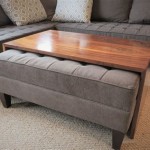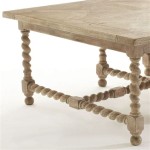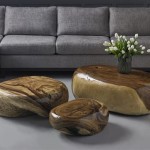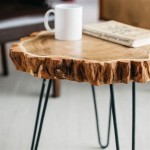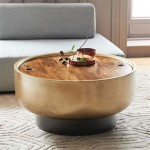How to Fix Outdoor Glass Table Top Scratches
Outdoor glass table tops, while aesthetically pleasing and offering a sophisticated touch to patios and gardens, are susceptible to scratches. Exposure to the elements, accidental contact with hard objects, and even regular cleaning can lead to unsightly blemishes on the glass surface. Addressing these scratches promptly and effectively is important to maintain the table's appearance and prevent further damage. This article provides a comprehensive guide to repairing scratches on outdoor glass table tops, covering various techniques and methods applicable to different types of scratches and glass.
Before commencing any repair work, it is crucial to assess the severity of the scratches. Minor, superficial scratches often appear as light hazing on the glass surface. Deeper scratches, on the other hand, are more pronounced and can be felt with a fingernail. The chosen repair method will depend largely on the depth and extent of the damage. Proper preparation of the glass surface is also paramount for optimal results. This involves thoroughly cleaning the table top to remove any dirt, debris, or grease that could interfere with the repair process. A mild soap solution and a soft cloth are typically sufficient for this purpose. After cleaning, the glass should be completely dry before proceeding.
Identifying the Type of Scratch
The first step in repairing a scratched glass table top is to accurately identify the type and severity of the scratch. This will dictate the most effective repair method. Scratches are generally categorized as either superficial or deep.
Superficial scratches are usually fine and barely noticeable, often appearing as a slight haze on the glass surface. These scratches typically do not penetrate deeply into the glass and can often be removed with relatively simple polishing techniques. A simple test to determine if a scratch is superficial involves running a fingernail gently across the affected area. If the fingernail does not catch or snag, the scratch is likely superficial.
Deep scratches, conversely, are more pronounced and easily visible. They penetrate further into the glass and are often noticeable to the touch. Running a fingernail across a deep scratch will typically result in the nail catching or snagging. Repairing deep scratches is generally more challenging and may require more aggressive polishing or, in severe cases, professional intervention.
Accurately distinguishing between superficial and deep scratches is essential for selecting the appropriate repair method and ensuring a successful outcome. Attempting to remove a deep scratch with a method designed for superficial scratches will likely prove ineffective and may even exacerbate the damage. Conversely, using an overly aggressive method on a superficial scratch can potentially damage the surrounding glass surface.
Repairing Superficial Scratches: Polishing Compounds
For superficial scratches, polishing compounds designed for glass are generally the most effective solution. These compounds contain fine abrasive particles that gently buff away the scratch marks, restoring the glass to its original clarity. Several types of glass polishing compounds are available on the market, each with varying levels of abrasiveness. Choosing the right compound is crucial to avoid damaging the glass.
Cerium oxide is a commonly used polishing compound known for its effectiveness on glass. It is available in powder form and must be mixed with water to create a slurry. The slurry is then applied to the scratched area and buffed using a polishing pad attached to a rotary tool or by hand using a microfiber cloth. The key to successful polishing is to use gentle pressure and consistent motion, avoiding excessive heat buildup that could damage the glass.
Alternatively, some commercially available glass polishing kits contain pre-mixed compounds and polishing pads, simplifying the process. These kits often include specific instructions for application and buffing, making them ideal for individuals with limited experience in glass repair.
The polishing process typically involves applying a small amount of the polishing compound to the scratched area and then buffing the glass using a circular motion. The duration of the buffing process will depend on the severity of the scratch and the type of polishing compound used. It is important to periodically check the progress of the repair and avoid over-polishing, which can create a haze on the glass surface.
After polishing, it is important to thoroughly clean the glass to remove any residual polishing compound. A clean, damp cloth is usually sufficient for this purpose. The glass should then be dried with a soft, lint-free cloth to prevent water spots. Multiple applications of the polishing compound may be necessary to completely remove the scratch.
Addressing Deep Scratches: Professional Assistance and Filling Techniques
Deep scratches pose a greater challenge and may not be effectively removed by simply polishing the glass. In some cases, attempting to polish out a deep scratch can distort the glass surface or create a noticeable dip. For severe scratches, seeking professional assistance from a glass repair specialist is often the most prudent course of action.
Glass repair professionals possess specialized tools and techniques for repairing deeper scratches, including grinding and polishing equipment capable of removing significant amounts of glass without damaging the surrounding area. They can also assess the extent of the damage and determine the most appropriate repair strategy.
In situations where professional repair is not feasible or cost-effective, alternative techniques such as filling the scratch with a clear epoxy resin can be considered. This method involves carefully applying a thin layer of epoxy resin into the scratch, filling the void and restoring the smooth surface of the glass. The epoxy resin must be specifically formulated for glass repair and be UV resistant to prevent yellowing over time, especially for outdoor use.
The application process requires precision and care to avoid creating air bubbles or excess resin on the surrounding glass surface. Once the epoxy resin has been applied, it must be allowed to cure completely according to the manufacturer's instructions. After curing, any excess resin can be carefully removed using a razor blade or a specialized scraping tool. The repaired area can then be gently polished to blend it seamlessly with the surrounding glass.
It is critical to note that filling a deep scratch with epoxy resin will not completely restore the original integrity of the glass. The repaired area may be slightly weaker than the surrounding glass and may be more susceptible to future damage. However, this method can significantly improve the appearance of the scratch and prevent further deterioration of the glass.
Another method involves using a glass repair kit that contains a resin and a UV light source. The resin is applied to the scratch, and then the UV light is used to cure and harden the resin. This method is often used for repairing windshield chips and cracks, but it can also be effective for deep scratches on glass table tops. The key is to ensure that the resin is specifically designed for glass and is compatible with outdoor use.
In summary, deep scratches on outdoor glass table tops require more advanced repair techniques than superficial scratches. While polishing may be sufficient for minor imperfections, deeper scratches often necessitate professional assistance or alternative methods such as filling with epoxy resin. The choice of repair method will depend on the severity of the scratch, the desired outcome, and the available resources.
Regardless of the chosen method, preventative measures are the best approach. Regularly cleaning the glass tabletop with appropriate cleaning solutions and using protective coverings during inclement weather can significantly reduce the likelihood of scratches.

How To Remove Scratches From Glass

How We Remove Scratches From Glass Table In Camarillo Ca

How We Remove Scratches From Glass Table In Camarillo Ca

How To Remove Scratches From Glass The Home Depot

How To Remove Scratches From Glass The Home Depot

How To Repair Glass Patio Table Problems

The Fastest Fix For A Scratched Glass Table

How To Remove Scratches From Glass The Home Depot

Need Help To Protect My Glass Table

How To Remove Scratches From Glass The Home Depot
Related Posts

